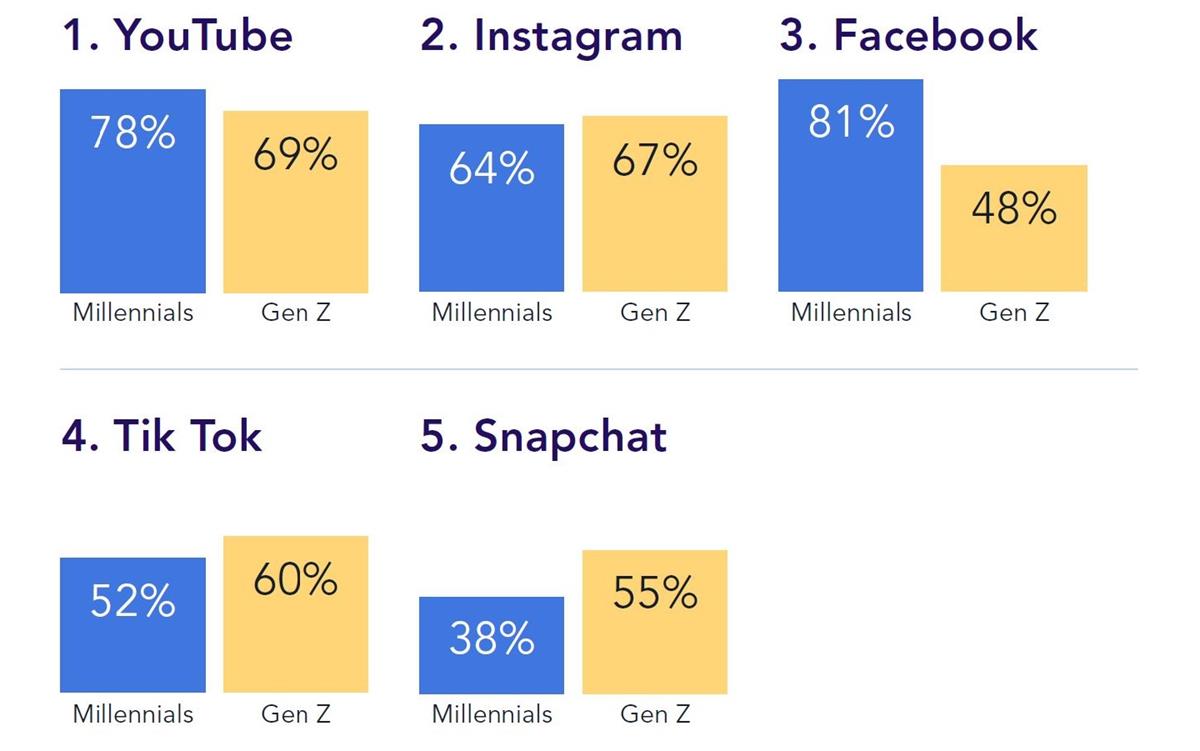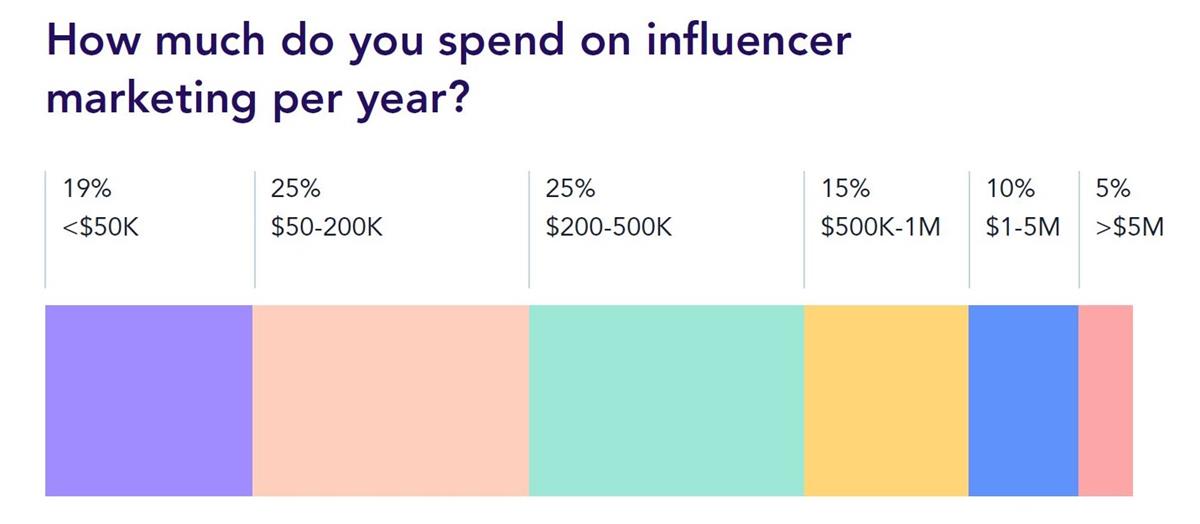
READ MORE: Influencer Marketing Impact Report (Traackr)
Influencer marketing investments are expected to grow to $5 billion next year in the US alone, but what is the most impactful way to put these investments to use?
Guidance can be found in a new “Influencer Marketing Impact Report“ produced by Traackr, which describes itself as a data-driven influencer marketing platform.
Its findings still give to YouTube as the social platform of choice among marketers and influencers, at odds with recent claims that it has been or is about to be usurped by TikTok.
The Traackr report analyzed survey data from 1,000 Gen Zs and Millennials to better understand how influencers, content, and social platforms have shifted consumer purchase behavior. The report also drew on survey data from 500 US-based marketers.

When asked which social platforms they use most regularly, consumers ranked YouTube number one, with Instagram coming second, Facebook third, TikTok fourth, and Snapchat fifth. Reddit and Pinterest nearly tied for sixth place, with Twitter trailing in seventh.
Meanwhile, marketers responded that they use Facebook the most for influencer marketing (68%), followed by Instagram (63%) and YouTube (48%).
Yet, according to a piece from Zheping Huang at Bloomberg, more time is now spent on TikTok than on Facebook and Instagram combined. Three years after turning on ads, TikTok will do more in ad revenue this year than Twitter and Snapchat combined. And the cost for a one-day run of a “TopView” ad (an ad that the TikTok app opens directly into) has swelled four times year-over-year to $2.6 million.
READ MORE: TikTok Turns On the Money Machine (Bloomberg)
“Gen Z and Gen Z-dominated apps will dominate commerce and consumer social for decades to come,” notes analyst Rex Woodbury.
READ MORE: 10 Characteristics That Define Gen Z (Part II) (Digital Native)
But according to Traackr’s report, the focus of investment among brands remains Google.
“The popularity of YouTube might be due to a larger shift in the way that consumers engage with content,” notes Evy Lyons, chief marketing officer at Traackr. “A few years ago, highly polished Instagram photos were seen as engaging — now, 45% of all consumers say that short videos are the most engaging content type.”
Furthermore, opinions about other content types vary between Gen Zs and Millennials. For example, Gen Zs gravitate more towards long videos and live streaming, while “stagnant” photos and written posts draw more Millennials.

“We are seeing this consumer shift towards video content in social data too,” says Lyons. “Over the past year, certain categories of influencer content have seen decreases in likes and comments, but stark increases in video views. We think this is because consumers are more likely to show interest in video content by simply watching or re-watching the post instead of clicking or commenting.”
While consumers had selected YouTube as their most used platform, per the report, they ranked Instagram and Facebook as the top platforms for purchasing products.
The survey found that 70% of consumers factor influencers into their purchase decisions: 59% stating that they look to influencers for product recommendations; 68% of consumers are willing to pay a higher price for a product made by a brand that aligns with their values.
Brands already seem to know this and are ramping up activity. A Traackr analysis of content from 40,371 influencers revealed that the number of sponsored posts has increased by 23% year-over-year (June 2020-May 2021 vs. June 2021-May 2022).

Influencer budgets among brands are growing: more than half of marketers surveyed say that they spend between $50,000-$500,000 thousand per year, and 15% reported they spend over $1 million.
However, there still seems to be debate about where the practice of influencer marketing should sit within an organization. Generally, larger companies (51-1,000+ employees) feel influencer marketing should be handled by social/digital teams, while smaller organizations (with fewer than 50 employees) say it should sit with brand marketing.
“With platform and content format proliferation, it’s unlikely that one platform will ever ‘rule them all,’ “ comments Holly Jackson, global director of professional services at Traackr. “We now live in a world where consumers are using multiple platforms on a daily basis, not to mention each generation has differentiated preferences for social media consumption.”


